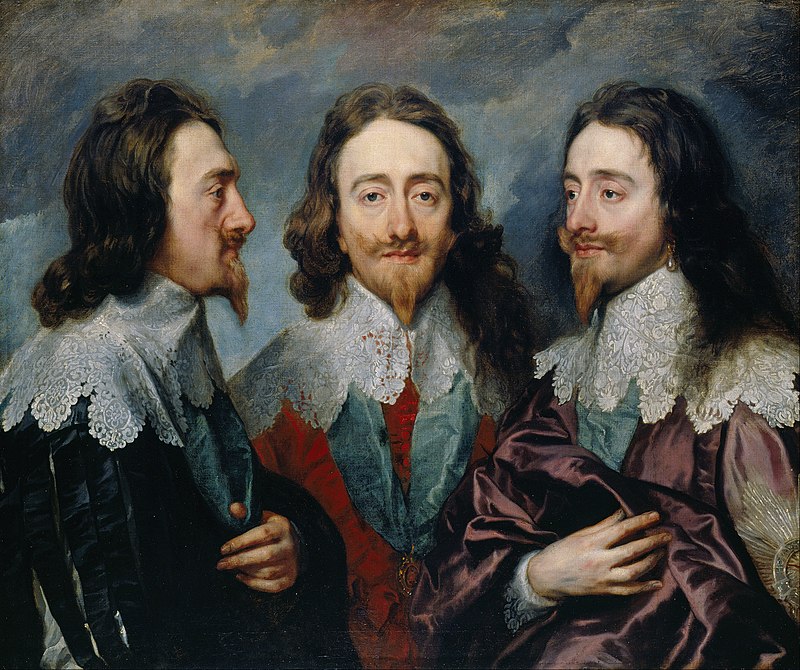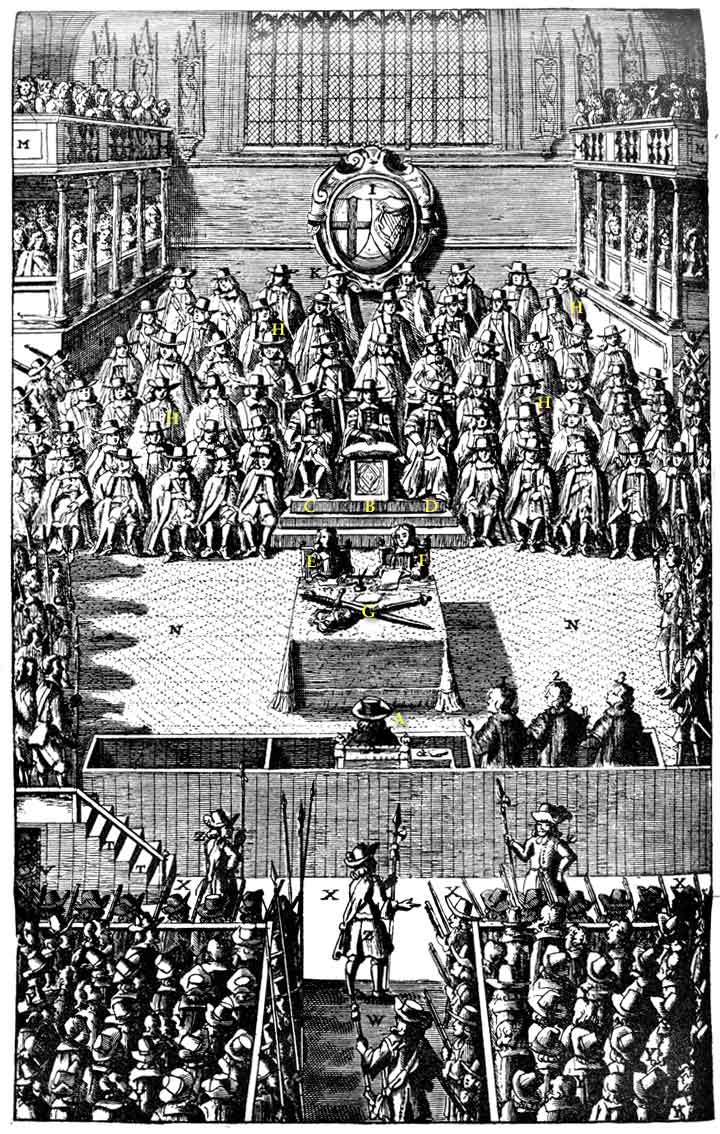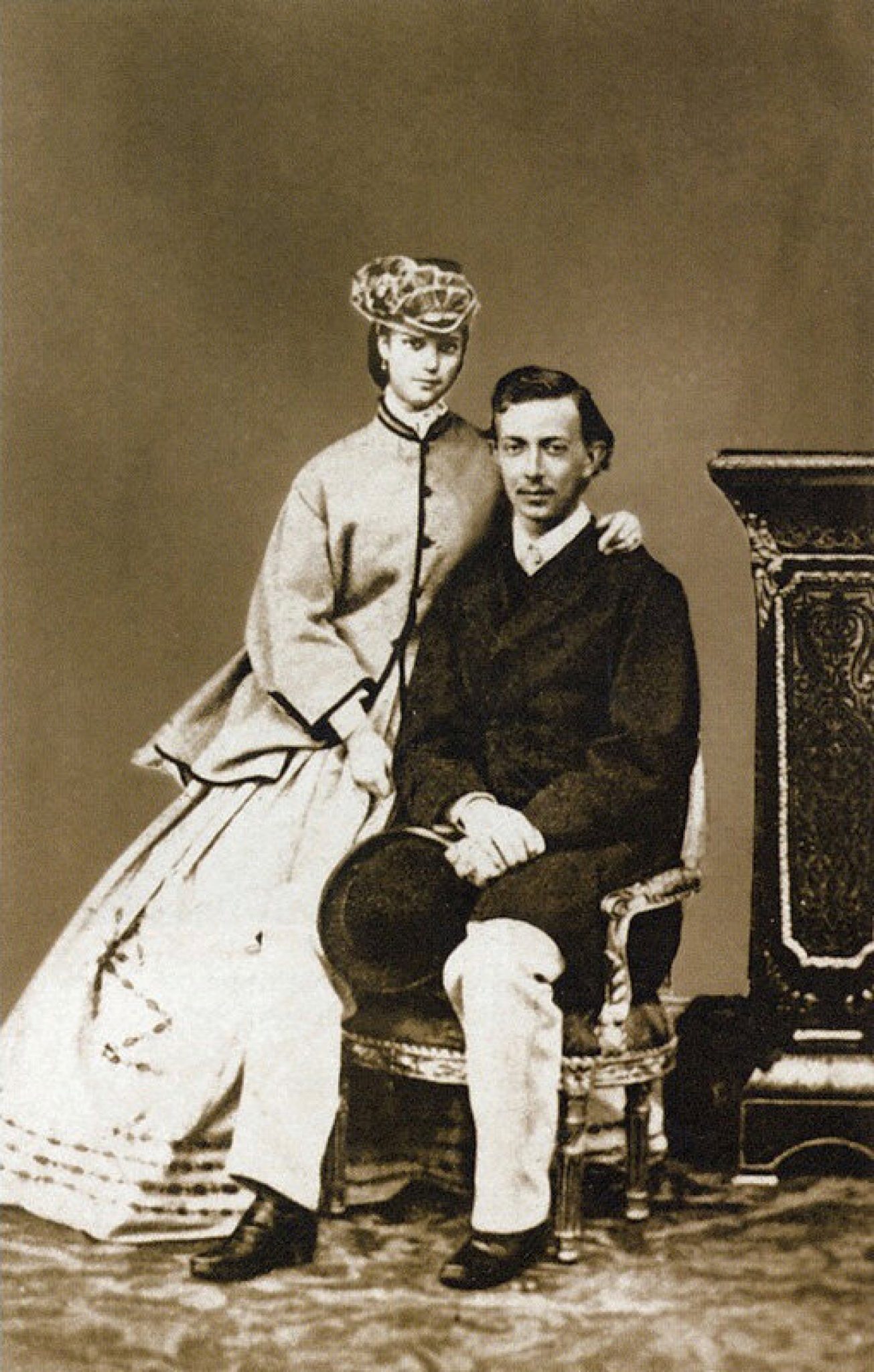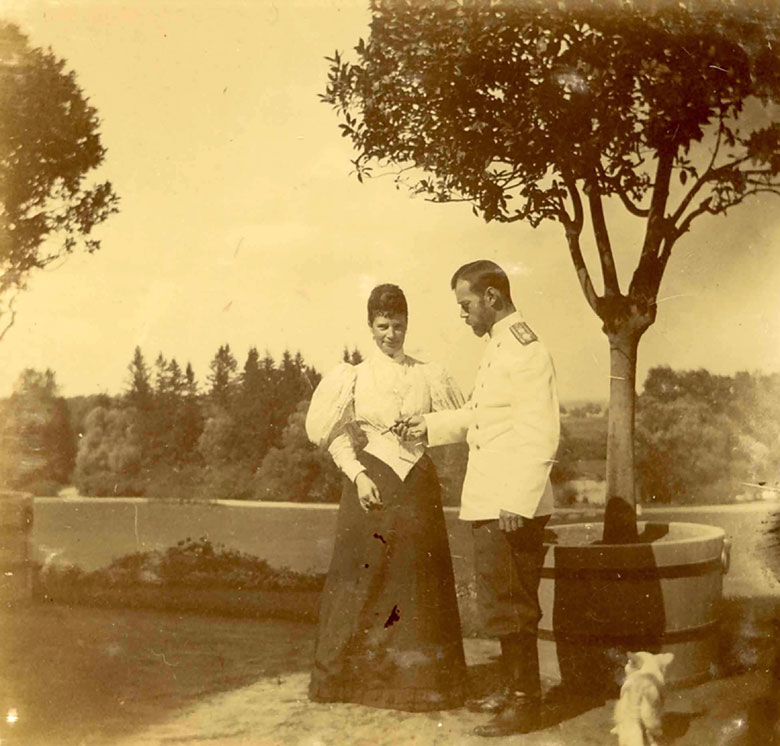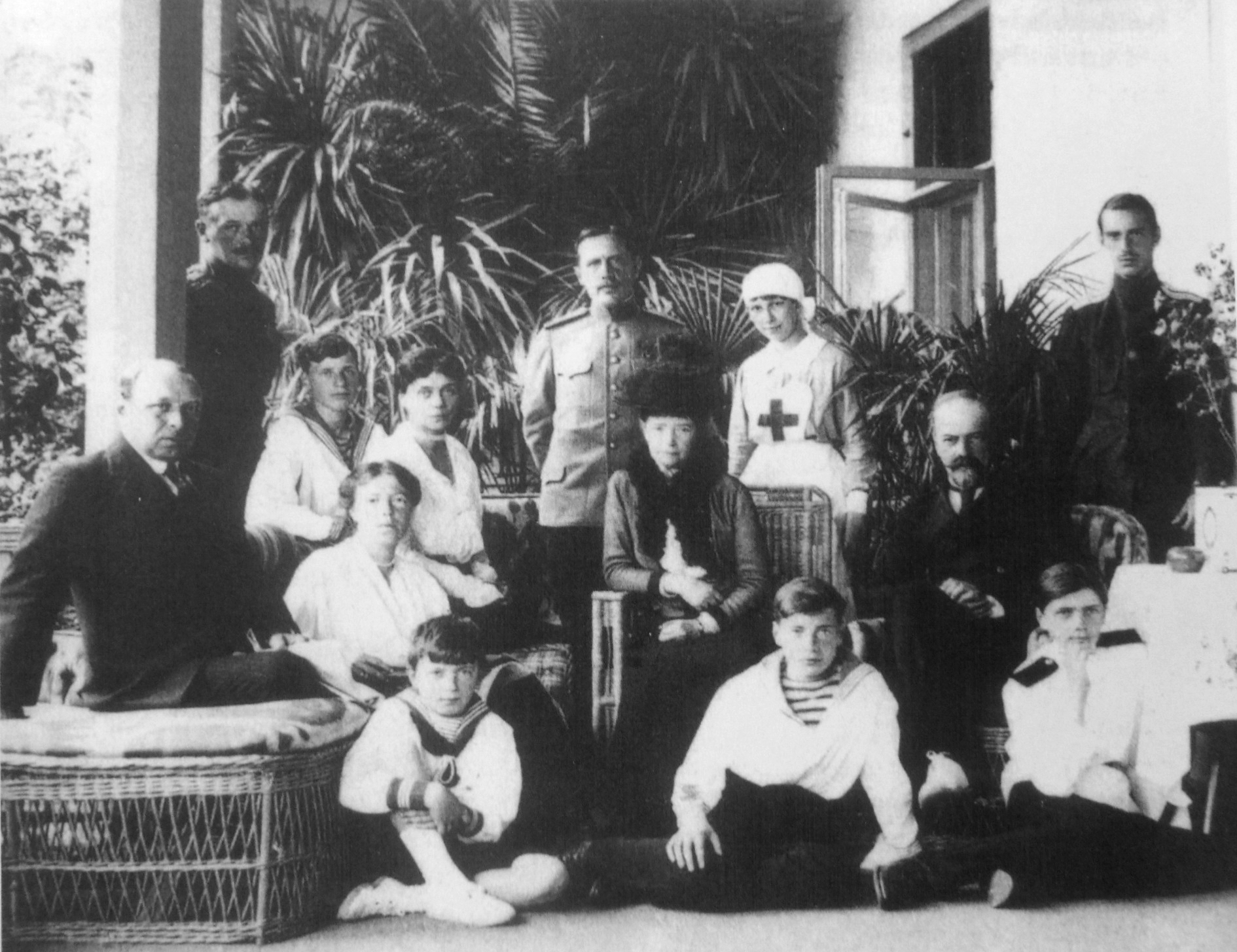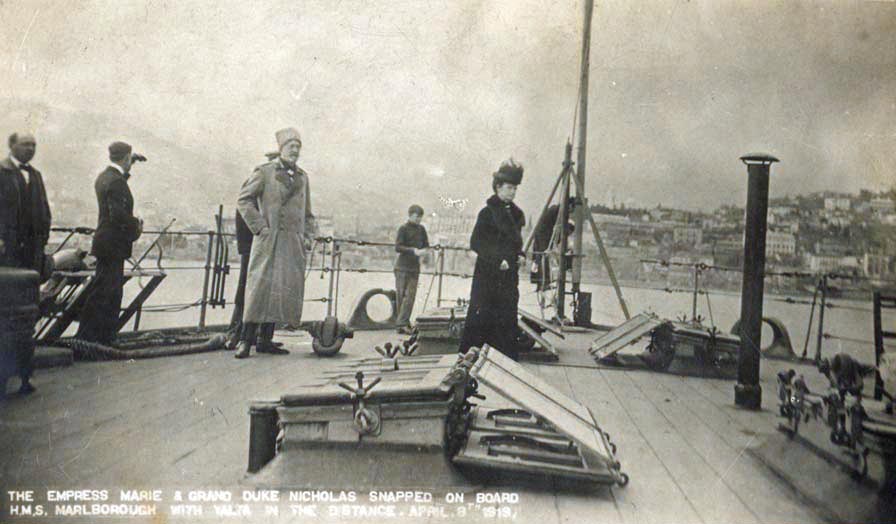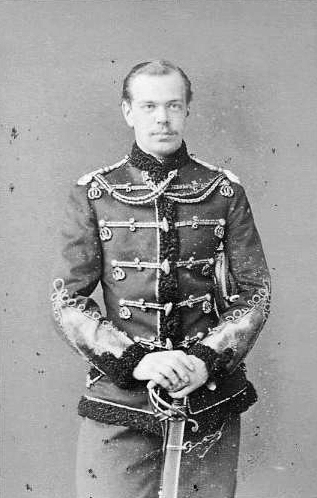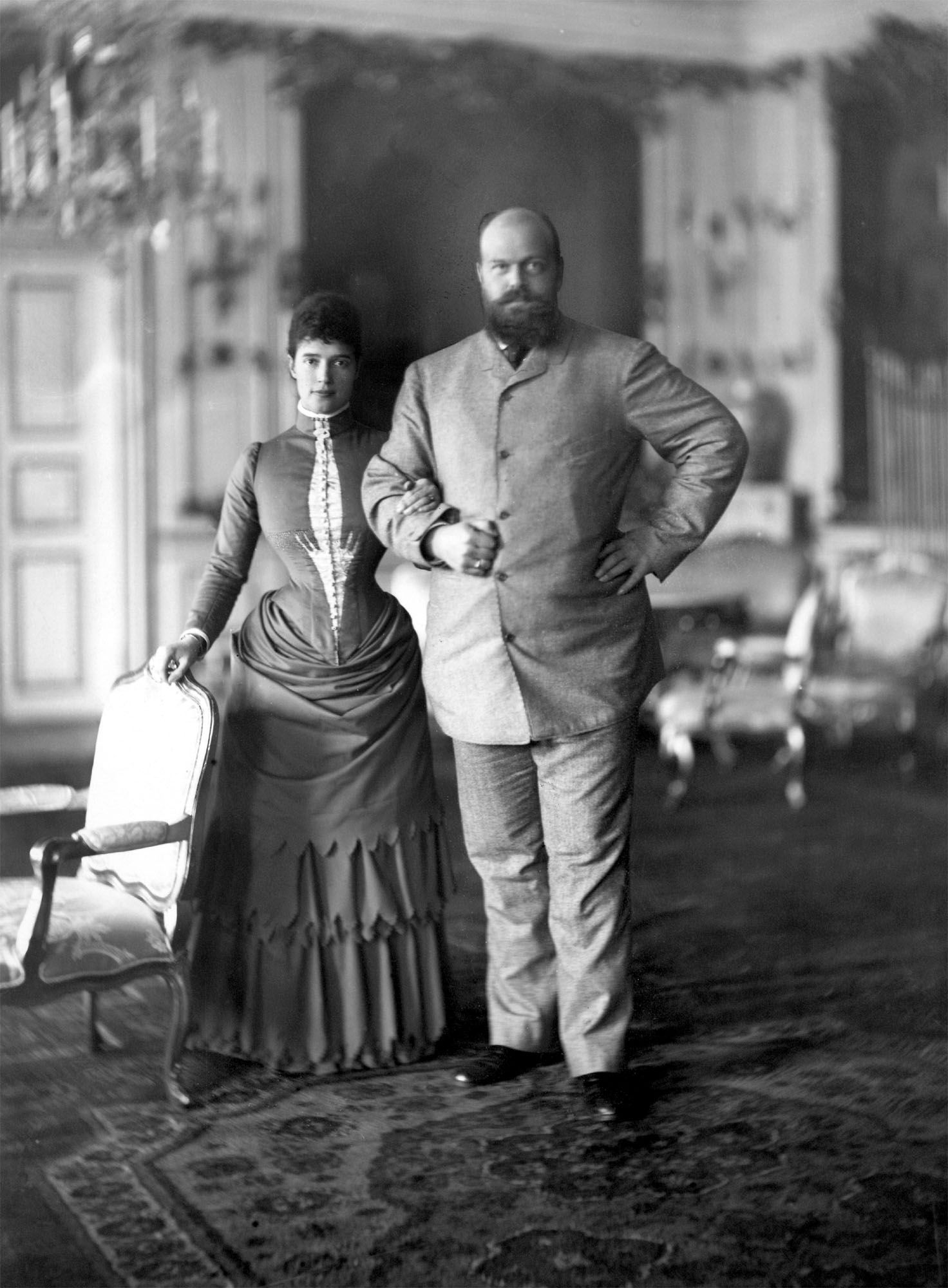by Susan Flantzer
- Major Lord Desmond FitzGerald
- Timeline: March 1, 1916 – March 31, 1916
- A Note About German Titles
- March 1916 – Royals/Nobles/Peers/Sons of Peers Who Died In Action
Born on September 21, 1888, Lord Desmond FitzGerald was the second of the three sons of Gerald FitzGerald, 5th Duke of Leinster and Lady Hermione Duncombe, daughter of William Duncombe, 1st Earl of Feversham. He was born at Carton House in Maynooth, County Kildare, Ireland, the ancestral home of the Dukes of Leinster. The house remained in the FitzGerald family until the early 1920s when the 7th Duke of Leinster sold it to pay off his gambling debts.
Lord Desmond had an elder brother and a younger brother, and both became Duke of Leinster, a title in the Peerage of Ireland and the premier dukedom in that peerage.
- Maurice FitzGerald, 6th Duke of Leinster (1887 – 1922), unmarried
- Edward FitzGerald, 7th Duke of Leinster (1892 – 1976, committed suicide), his alleged biological father was Hugo Charteris, 11th Earl of Wemyss; married four times, one legitimate child via his first marriage Gerald FitzGerald, 8th Duke of Leinster (1914 – 2004)
Lord Desmond’s elder brother Maurice, who became the 6th Duke of Leinster in 1893 when he was six years old, spent his adult life in a psychiatric hospital, living in a villa on the hospital grounds and attended by a butler, from 1907 until his death in 1922.
Lord Desmond was educated at Eton College and then attended the Royal Military Academy Sandhurst. He passed out of Sandhurst to Irish Guards in February of 1909. He was promoted to Captain in 1913, and then in July of 1915 was promoted again to Major. He was been twice wounded in action, had been mentioned in dispatches, and was awarded the Military Cross.
According to an article in The New York Times, March 8, 1916, Lord Desmond “was experimenting with a new kind of bomb, when it exploded and a fragment struck him in the head. He was taken to a hospital and died an hour later.”
Author and poet Rudyard Kipling whose Irish Guard son John was killed in action, wrote in The Irish Guards in the Great War (chapter The Salient to The Somme): “On March 3, during practice with live bombs, one exploded prematurely, as several others of that type had done in other battalions, and Major Lord Desmond FitzGerald was so severely wounded that he died within an hour at the Millicent Sutherland (No. 9. Red Cross Hospital). Lieutenant T. E. G. Nugent was dangerously wounded at the same time through the liver, though he did not realise this at the time, and stayed coolly in charge of a party till help came. Lieutenant Hanbury, who was conducting the practice, was wounded in the hand and leg, and Father Lane-Fox lost an eye and some fingers.
Lord Desmond FitzGerald was buried in the public cemetery at Calais on the 5th. As he himself had expressly desired, there was no formal parade, but the whole Battalion, of which he was next for the command, lined the road to his grave. His passion and his loyalty had been given to the Battalion without thought of self, and among many sad things few are sadder than to see the record of his unceasing activities and care since he had been second in command cut across by the curt announcement of his death.”

Calais Southern Cemetery in Pas de Calais, France where Lord Desmond FitzGerald was buried; Photo Credit – http://www.cwgc.org/
However, Lord Desmond’s story is not over. In 1922, when Maurice FitzGerald, 6th Duke of Leinster died, the youngest of the three brothers, Edward FitzGerald, became the 7th Duke of Leinster. The 7th Duke had a severe gambling addiction. He was bankrupted three times, in 1918, 1922 and again in 1936, and married four times. Unable to cope with his financial problems, the 7th Duke ended up living in a tiny one room flat in the Pimlico section of London. Distraught, depressed and penniless, he committed suicide in 1976. His son Gerald FitzGerald became 8th Duke of Leinster.
In 1976, when the 7th Duke died, a California artist and teacher, Leonard FitzGerald, claimed to be the rightful Duke of Leinster. He said his father was Lord Desmond FitzGerald, the second of three sons of Gerald FitzGerald, 5th Duke of Leinster, who was thought to have been killed in World War I. Leonard FitzGerald insisted that Lord Desmond, however, secretly emigrated to North America and lived there until his death in 1967, despite eyewitness accounts of Lord Desmond’s death and his burial at the cemetery in Calais, France. On the advice of his doctor, because of ill health, Leonard FitzGerald withdrew his claim. He died in 1994, but the claim was continued by his son Paul FitzGerald, who filed a suit with the British Department of Constitutional Affairs in 2006. However, Paul FitzGerald’s claim was eventually dismissed in 2007.
Canada.com: U.K. shoots down American’s claim to Irish dukedom
In 2010, DNA evidence was presented that indicates Paul FitzGerald is related to the wife of the 5th Duke of Leinster and the mother of Lord Desmond, born Lady Hermione Duncombe. This DNA evidence could pose a real legal challenge to the existing holder Maurice FitzGerald, 9th Duke of Leinster as it supports Paul FitzGerald’s theory that the ducal title has gone down the wrong branch of the family. However, at the time of this writing, there has been no further legal decisions.
The Scotsman: DNA test the latest twist in aristocratic tale of a cowboy, a gambler and a web of deceit
*********************************************************
Timeline: March 1, 1916 – March 31, 1916
March 1 – Germany resumes unrestricted submarine warfare
March 1–15 – Fifth Battle of the Isonzo on the Soča River, now in Slovenia
March 2 – August 4 – Battle of Bitlis in Bitlis Vilayet, Ottoman Empire (now in Turkey)
March 8 – Battle of Dujaila in Kut, now in Iraq
March 9 – Germany declares war on Portugal and Portugal officially enters the war
March 11–12 – Battle of Latema Nek in Latema-Reata Hills, British East Africa (now in Kenya and Uganda)
March 18 – Battle of Kahe in Kahe, German East Africa (now Burundi, Rwanda, and Tanzania)
March 18 – March 30 – Lake Naroch Offensive on Lake Narach, now in Belarus
*********************************************************
Many German royals and nobles died in World War I. The German Empire consisted of 27 constituent states, most of them ruled by royal families. Scroll down to German Empire here to see what constituent states made up the German Empire. The constituent states retained their own governments, but had limited sovereignty. Some had their own armies, but the military forces of the smaller ones were put under Prussian control. In wartime, armies of all the constituent states would be controlled by the Prussian Army and the combined forces were known as the Imperial German Army. German titles may be used in Royals Who Died In Action below. Refer to Unofficial Royalty: Glossary of German Noble and Royal Titles.
24 British peers were also killed in World War I and they will be included in the list of those who died in action. In addition, more than 100 sons of peers also lost their lives, and those that can be verified will also be included.
*********************************************************
March 1916 – Royals/Nobles/Peers/Sons of Peers Who Died In Action
The list is in chronological order and does contain some who would be considered noble instead of royal. The links in the last bullet for each person is that person’s genealogical information from Leo’s Genealogics Website or to The Peerage website. If a person has a Wikipedia page, their name will be linked to that page.
- son of Gerald FitzGerald, 5th Duke of Leinster and Lady Hermione Duncombe
- born September 21, 1888
- unmarried
- Major and Adjutant 1st Battalion, Irish Guards
- killed in action on March 3, 1916 in Calais, France, age 27
- http://www.thepeerage.com/p2767.htm#i27668

Captain The Honorable Sydney Joicey
- son of James Joicey, 1st Baron Joicey and Margaret Smyles Drever
- born November 24, 1884
- unmarried
- Captain and Adjutant 10th Battalion, Northumberland Fusiliers
- killed in action on March 20, 1916 in Liévin, France at age 31
- http://www.thepeerage.com/p33884.htm#i338837
Maximilian, Graf von Attems
- son of Emil, Grad von Attems and Therese, Gräfin O’Donnell von Tyrconell
- born in Burg Feistritz, Austria on August 27, 1896
- unmarried
- killed in action on the Dneister River in Russia March 10, 1916, age 19
- http://www.genealogics.org/getperson.php?personID=I00247902&tree=LEO

Captain The Honorable Alfred Shaughnessy
- son of Thomas Shaughnessy, 1st Baron Shaughnessy and Elizabeth Bridget Nagle
- born October 18, 1887
- married 1912 Sarah Polk Bradford, had issue
- Captain in the 60th Battalion Canadian Infantry
- killed in action at Zillebeke, Belgium on March 31, 1916, age 28
- http://www.thepeerage.com/p42669.htm#i426683
- Trivia: Writer and producer Alfred Shaughnessy, best known for serving as the script editor of Upstairs, Downstairs, was the posthumous son of Captain The Honorable Alfred Shaughnessy. He was the father of actor Charles Shaughnessy (best known for the soap opera Days of Our Lives and the sitcom The Nanny), who is the fifth and current holder of the title Baron Shaughnessy.






















